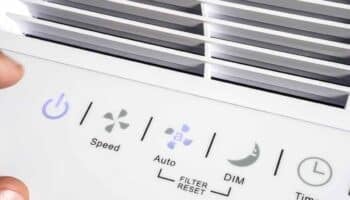We've independently reviewed this article to make sure it's as accurate as we can make it.
To find out more about our article creation and review process, check out our editorial guidelines.
Are you shopping for a portable air conditioner?
You’re not alone! It’s common to get stuck when buying a new portable air conditioner.
Luckily in this buyer’s guide, I’ll walk you through everything you should know when it comes to shopping for a portable air conditioner.
And don’t worry. I’ve got nothing to sell you.
Our website is based around helping our readers solve issues with their appliances and air conditioners, so I’m only writing this guide to help you choose the best model for your home.
Please don’t rush out and make a purchase only to find out you need to return it. Take advantage of my years of expertise and make the right choice the first time.
Keep reading this portable air conditioner buyer’s guide to make the right choice!
Why Trust Us? This article was written by Craig Anderson & Alan Stephens.
Craig has helped thousands of homeowners repair their appliances since 2016.
Alan is our resident HVAC expert with 20+ years of experience. Holding many HVAC certifications, Alan runs his own HVAC company, Eco Green Air Inc, out of North Carolina.
Types of Portable Air Conditioners
When looking for a portable air conditioner, I always advise homeowners to consider its type.
You see, you can choose from three different types of portable air conditioners. Two of them need to exhaust air to the outside, and one does not. Let’s review them:
Single Hose Portable Air Conditioners
The single-hose model is the most common type of portable air conditioner, so you’ll also find the best selection.
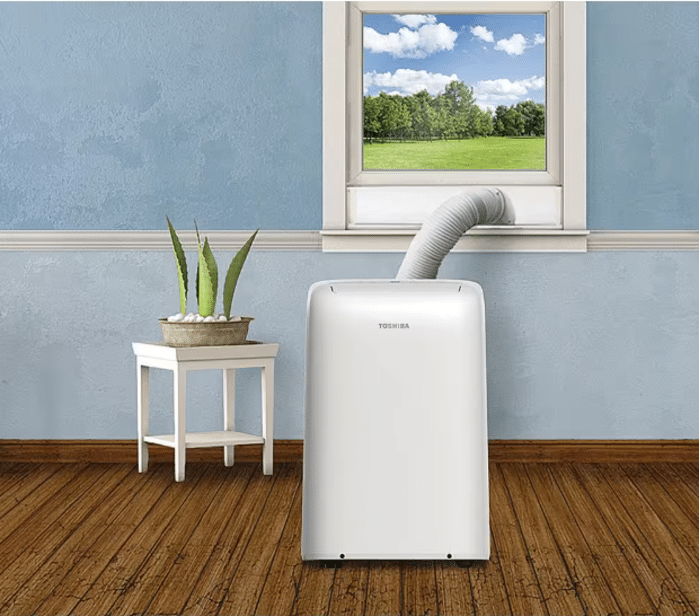
Single-hose portable air conditioners pull hot air from your indoor environment and cool it. Then, the warm air is released outside using a single hose, typically connected to a window.
In my opinion, single-hose portable air conditioners are relatively easy to install. However, they’re less efficient compared to other AC units.
Dual-Hose Portable Air Conditioners
If you want a more efficient portable air conditioner, consider buying a dual-hose model.
Instead of sharing a single hose that works double duty for both intake and exhaust purposes, a dual hose system uses one hose for exhaust and another for intake, making it more efficient than the single-hose version.
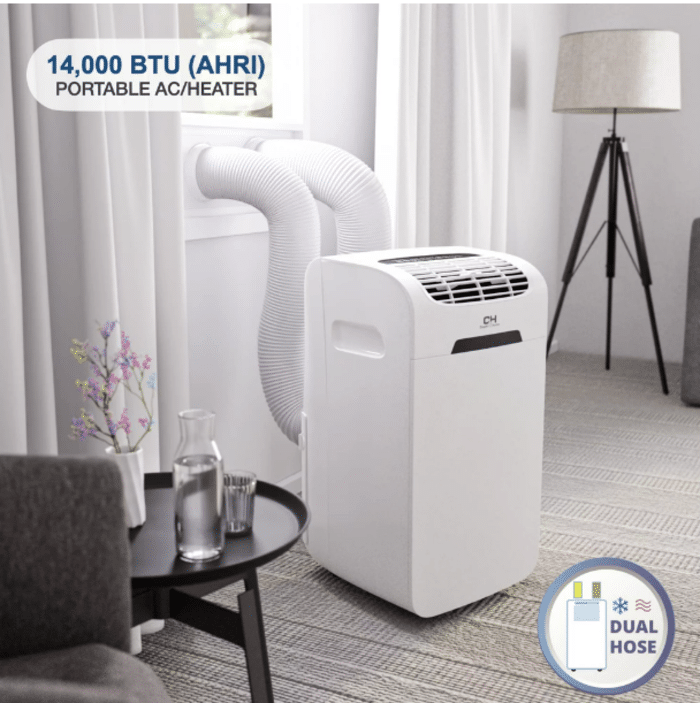
Additionally, the intake hose prevents negative pressure while cooling down the air conditioner. Just keep in mind that dual-hose portable ACs can be a bit more complex to install due to the extra hose.
Evaporative Coolers
If you’re a renter who can’ vent air to the outside, I recommend buying an evaporative cooler, as it has no intake or exhaust hoses.
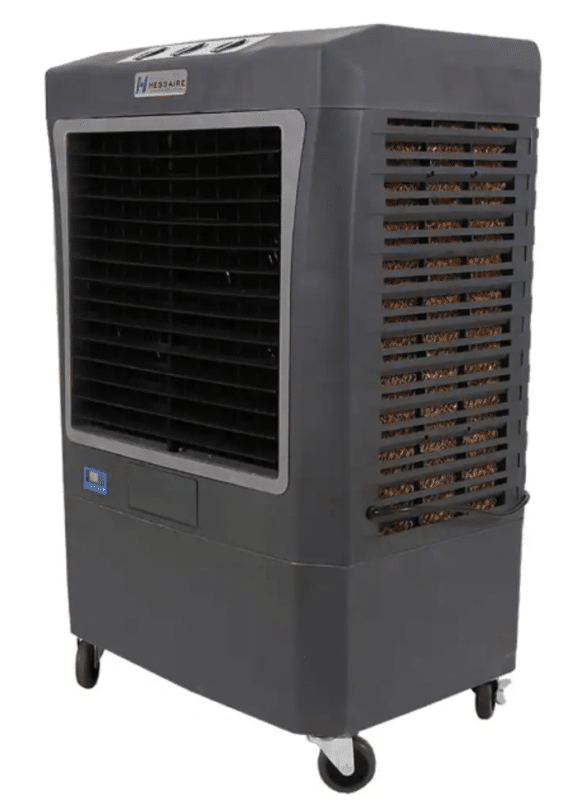
As the name suggests, evaporative coolers use an evaporative cooling process to reduce indoor temperature. They do this using a water reservoir and cooling pads. The cooling pads absorb the water, which slowly evaporates as hot air is fanned across, cooling the air and releasing it back into the room.
What to Keep in Mind When Buying a Portable Air Conditioner
When choosing the best portable air conditioner for your home, you also need to consider other factors.
Please read the following quick portable air conditioner buyer’s guide I’ve prepared to make an informed decision.
#1 Placement
When buying a portable air conditioner, I always advise homeowners to consider the room layout where they plan to place it.
Unless you opt for a ventless evaporative cooler, you need to ensure there’s a nearby window and electrical outlet.
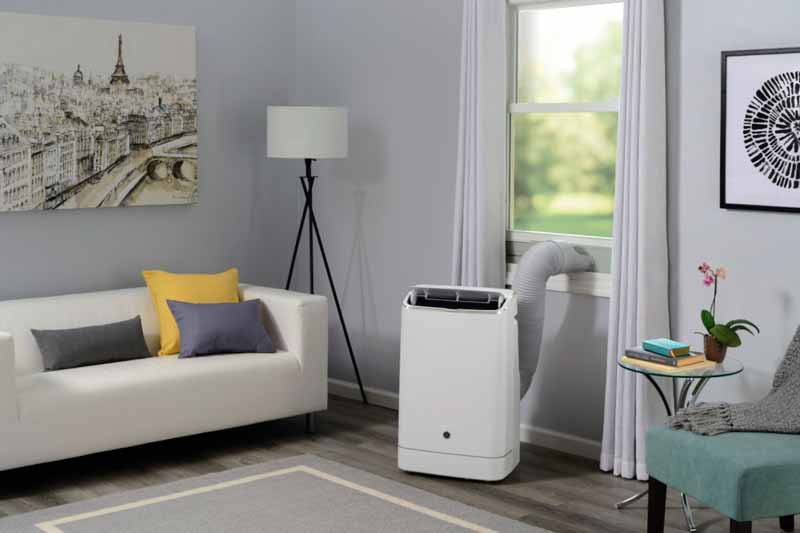
But not just any window and any electrical outlet.
Ideally, you’ll place your air conditioner close to a window with an opening and an electrical outlet with enough voltage to run your unit. More on that later.
There are a few workarounds if you don’t have a window nearby.
- Window hose extension kits. The typical hose length is between 5 and 7 feet, but you can buy an extension. However, it’s best to keep the hose length under 12 feet and avoid any 90° bends.
- Use the dryer vent. Your dryer vent can double as a vent hole for your portable air conditioner.
- You can find installation kits that allow you to exhaust your air conditioner through your sliding patio doors.
#2 Room Size
When buying a portable air conditioner, it’s also important to think about the size of the room or area you want to cool.
Knowing your room’s size is one of the biggest factors in calculating an air conditioner’s cooling capacity — BTUs.
To calculate the square footage of your room, multiply the length by the width. Then, refer to the table below to estimate the cooling capacity required for your portable air conditioner.
| Room Size | Approximate BTUs |
| 200 sq ft | 8,000 BTUs |
| 300 sq ft | 10,000 BTUs |
| 400 sq ft | 12,000 BTUs |
| 450 sq ft | 13,000 BTUs |
| 500 sq ft | 14,000 BTUs |
Once you calculate the size, there are a few other things to remember.
#3 Environmental Considerations
There are some environmental considerations you need to keep in mind when buying a portable air conditioner.
The more heat gain in a room or area, the more cooling power is necessary.
In my experience, the following things add heat to your room.
- Direct sun on windows — and the number of hours a day you get direct sun
- The higher your ceilings, the more air volume in the room. The more air volume, the more cooling capacity.
Additionally, a few things can decrease the amount of heat a room gets. If you’re looking to add an air conditioner to a room where the outside is heavily shaded, you can deduct some BTUs from your calculations.
For specifics on how many BTUs to add or subtract in different situations, please refer to the Energy Star site.
#4 Electrical Requirements
One of the most important things you need to consider when buying a portable air conditioner is the electrical requirements.
As mentioned above, any old electrical outlet will not be sufficient.
Depending on the capacity of your portable air conditioner, you may be able to get away with a regular outlet. However, the bigger the size — capacity-wise — the greater the chance you’ll need a dedicated circuit.
I recommend checking the specifications for any portable air conditioner you’re looking at. But generally speaking, a standard 120-volt circuit will be sufficient to run a 12,000 BTU air conditioner. Once you get up to 13,000 or 14,000 BTUs, you should use a dedicated 220-volt circuit.
#5 Features
The final aspect to consider in this portable air conditioner buyer’s guide is the required features.
Take some time to think if there’s anything you need or want in your portable air conditioner.
I’ve tested all the available features to help you decide which are worth the investment.
Here are the features you should look for when buying a new portable air conditioner (plus a little more detail on a few of them below):
- Dehumidifier
- Energy Star
- Fan only
- Low decibel rating
- Remote control
- Thermostat
- Timer
Dehumidifier. On humid days, you can opt to dehumidify without cooling your air. A portable air conditioner with this additional feature will allow you to do just that.
Fan only. The fan-only mode helps you circulate air without cooling it.
Low decibel rating. Unlike central or window air conditioners, where the compressor is outside, all components of a portable air conditioner are in the room with you. So, I strongly recommend looking for something with the lowest decibel rating possible. Click here to check out our detailed guide on the best quiet portable air conditioners!
Energy Star. With rising energy costs buying an Energy Star-certified air conditioner makes the most sense. It can cost you a bit more upfront but will likely save you money down the line.
Choosing the Right Portable Air Conditioner
Now that you’ve gone through this portable air conditioner buying guide, it’s time to make a decision.
Don’t forget to keep in mind the different types of portable air conditioners available and the electrical requirements associated with each type. It’s also crucial to consider the size of the room you want to cool and the features that align with your needs.
There’s no one-size-fits-all answer when it comes to buying a new portable air conditioner. You must make a decision based on your specific needs.
For example, if you’re a renter aiming to maintain a quieter environment, opting for an evaporative cooler with a low decibel rating is the way to go.
Lastly, keep your budget in mind when buying a portable air conditioner. From what I’ve seen, more features and higher BTUs come with a higher price tag.
By considering all these factors, you can relax knowing you’re making an informed decision.
Portable Air Conditioner FAQs
How Many BTUs Do I Need for a Portable Air Conditioner?
Determining the cooling capacity for a portable air conditioner depends on the size of your room and sun exposure.
Multiply the length and width of your room and check this table. The larger the room, the greater the BTU requirement.
What Is the Life Expectancy of a Portable Air Conditioner?
The lifespan of your portable air conditioner will vary depending on how well it’s maintained, the frequency of use, and the brand. A well-maintained portable air conditioner can last 5 to 10 years.
Click here to check out our portable air conditioner maintenance & care guide!
How Long Will It Take a Portable Air Conditioner to Cool a Room?
To be more precise, as long as you have a unit with the correct cooling capacity, it should take about 20 minutes to cool a room.
Portable air conditioners take about the same amount of time that a window unit will take. Just keep in mind that a dual-hose portable air conditioner is more efficient and will cool your room quicker.





